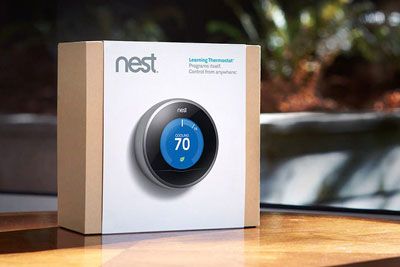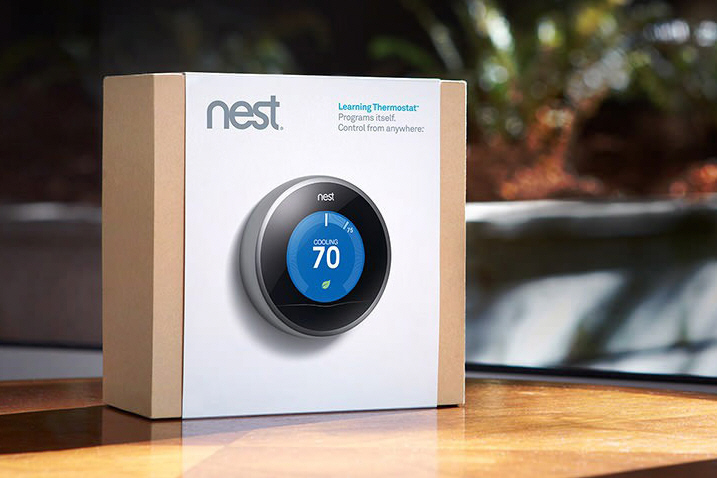Key players in the technology industry have unveiled their strategies for the next few years and a key theme being demonstrated is making everything in our lives, from our watches, to our homes and our cities, smart and connected to each other. This new technology presents organisations with the potential opportunity to either increase revenue or cut costs.
“Make everything smart.” – Intel CEO Brian Krzanich, CES 2014.

Targeting the emerging market for next-gen wearable technology (and no doubt hoping to offset declining PC sales), Intel CEO Brian Krzanich showcased a variety of example products during his keynote speech at the Consumer Electronics Show in Las Vegas last month.
From a smart-watch with telephony and messaging capabilities, smart headphones that sense and report the vital signs of the owner during exercise, to a baby’s ‘onesie’ with integrated health monitoring capabilities, all have been made possible with Intel’s Edison PC system – roughly the size of an SD memory card you would find in a digital camera.
While impressive examples on their own, the true value of the Edison is derived from a network of these tiny computers, embedded in everything you wear.
These smart devices are capable of talking to each other and your smartphone, either via Bluetooth or WiFi.
Intel is not alone in the quest to make everything in our lives ‘smart’. Google has bought ‘smart-home’ business Nest for $3.2 billion dollars in cash.
Nest are a 300 employee strong company founded in 2010 focused on providing ‘smart’ versions of energy and safety products in the home, such as thermostats and smoke alarms. These products can sense your presence in the home and respond accordingly, allow remote control via smartphone applications and also give tips and feedback on your energy use.
“Google will help us fully realize our vision of the conscious home and allow us to change the world faster than we ever could if we continued to go it alone.” – Founder & CEO of Nest, Tony Fadell.
So why did Google buy Nest?
Like Intel, Google wants to be embedded in all aspects of your life, as do Microsoft – you can see Microsoft’s strategy in the way in which its games console has transformed into the XBox One entertainment and communications hub, and the on-going effort to homogenise the Microsoft experience across its evolving tablet, smartphone, PC and home entertainment platform.
The difference is how Google are going about it. Pervading the shape and fabric of your home is more likely to allow these products the opportunity to offer value to the customer on a daily basis –as soon as you wake up, while you are at work or when you walk back through the door at the end of the day.
These ‘smart’ products may come with a hidden cost beyond that of the asking price – Like Apple and Microsoft, Google want you inside their ecosystem of products. Google’s key differentiator is that Google are very good at building revenue using data collected from their products. By offering consumers different products they are likely to be interested in purchasing, either from Google, from those using Google as an advertising platform, or, more likely, providing energy usage data to energy and utility companies.
The Internet of Everything
We’ve talked about the plans to make your personal belongings and your home smart, but what about your community, city or even your country?
This is the vision of Cisco CEO John Chambers – a vision of an ‘Internet of Everything’, where huge amounts of data can be collected from literally everything we take for granted, like rubbish bins, buses and other public infrastructure. This information is then used to enable cities to become ‘smart’, for example, only send someone to collect refuse when the bins are full, better route planning and resource allocation for public transport, detection of problems in water or electric utilities before they become critical.
“2014 will be the transformational pivotal point for the Internet of Everything.” – Cisco CEO John Chambers, CES 2014.
All of the ingredients in the cocktail of a smart, connected and ‘always on’ world are almost ready, and over the next few years we will see them mix together. We will have to watch how this mix will be complemented by existing technologies such as the radio frequency identification that enables contact-less payments, the London Transport Oyster Card travel pass and advanced stock control systems.
To remain competitive and efficient, the businesses of today must start looking at how the micro and macro level application of smart technology can enable them to measure, analyse, improve and control their business processes, and offer customers new value within their products that previously was not possible.
We can see that the industry is tackling the challenge of making everything in our lives smart – are you ready for the challenge of making your organisation smart?



